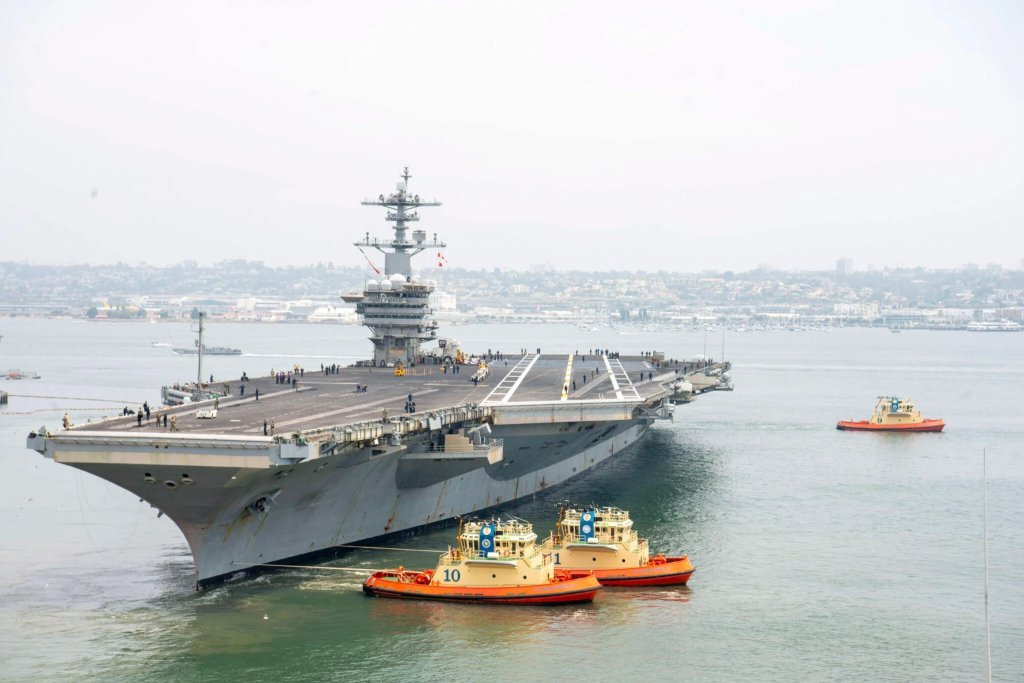Damaged Big Horn endangers Mid-East Deployed Abraham Lincoln Carrier Group


An at-sea mishap involving the U.S. Navy’s Military Sealift Command (MSC) oiler USNS Big Horn is highlighting concerns about the Navy’s ability to sustain itself given the limited number of such vessels. The issue is especially acute given that the Big Horn’s mission was to refuel the ships and aircraft in the Abraham Lincoln Carrier Strike Group (CSG) now in the tumultuous U.S. Central Command region.
The Big Horn “was damaged while operating at sea in the U.S. Fifth Fleet area of operations overnight on Sept. 23,” a Navy official told The War Zone Tuesday morning.
“All crew members are currently safe and U.S. 5th Fleet is assessing the situation,” said the official, adding that the Big Horn is currently being towed to an unspecified port in the region. A second Navy official told The War Zone that the damage to the Big Horn will likely take months to repair.
The Big Horn was the only oiler in the region because the USNS Supply returned to port, that official confirmed. It arrived in Norfolk, Virginia in June as one of the last ships to return from a nine-month deployment with the Eisenhower Carrier Strike Group, according to WTKR TV.
“The Navy will have to move another [oiler] into the theater,” said the second official, speaking on condition of anonymity to discuss operational details.
The mishap was first reported by John Konrad of GCapatain, who said the vessel ran aground off Oman. It comes at a critical juncture, with hostilities between Israel and Hezbollah heating up. That is sparking concerns of a wider conflict that could draw in the U.S., which is now planning to move additional troops into the region as a result, the Pentagon’s top spokesman, Air Force Maj. Gen. Pat Ryder, told reporters on Monday.
The Lincoln CSG arrived in the U.S. Central Command region late last month “as part of broad adjustments to [the] U.S. military posture to ensure U.S. force protection, increase support for the defense of Israel and ensure the United States is prepared to respond to a wide range of contingencies,” said Pentagon Deputy Press Secretary Sabrina Singh at the time.

As we noted in the past, the Dwight D. Eisenhower CSG had an extremely active seven-month deployment to the region before leaving in June. It fired nearly 800 munitions as it battled the Houthi rebels of Yemen and helping protect Israel against a massive missile and drone barrage from Iran. You can read more about that deployment from the viewpoint of the carrier’s commander, Navy Capt. Chris “Chowdah” Hill, in our interview here.

A similarly high-tempo deployment for the Lincoln CSG could be adversely affected by the Big Horn now out of commission for a while, said the second Navy official, adding that it depends on what contingencies U.S. Naval Forces Central (NAVCENT) have in place.
We reached out to NAVCENT and MSC for comment. MSC deferred questions to NAVCENT, which has yet to respond. We will update this story with any pertinent information provided.
The temporary loss of the Big Horn “could potentially constrain the level of air operations and ship operations” for the Lincoln CSG, Sal Mercogliano, a maritime historian, former Merchant Marine and host of the WGOW Shipping podcast, told The War Zone. “They may have to send ships into port to refuel. What capacity exists for underway refueling would be reserved for the carrier.”
The U.S. Military Support Command only has 14 Kaiser class oilers like the Big Horn and two Supply class oilers. Adding to the pressures are that five Kaiser class oilers are in shipyards while the remainder are spread out across the globe., Mercogliano pointed out.
While there are two replenishment ships in the region, they can carry only a small fraction of the fuel provided by the oilers, Mercogliano noted.
Both the second Navy official and Mercogliano said that the Big Horn mishap will have effects beyond just the Lincoln CSG.
“This will have a cascading effect across the Navy,” said the second Navy official. “Given the limited number of oilers, to have an unscheduled loss affects ships around the world, because she will have to be replaced for some period of time and there are only 14 of them.”
Retired Vice Adm. Willam A Brown, President of the National Defense Transportation Association (NDTA), expressed confidence in NAVCENT’s ability to sustain the Lincoln CSG.
“While this is a significant event, there are multiple options to refuel the carrier strike group—and NDTA is confident MSC, the US Navy and USTRANSCOM have options in their playbook to meet the highest demands which the strike group could meet,” Brown said in a statement to The War Zone.
Even before the Big Horn mishap, there were major concerns about the Navy’s ability to supply itself in a high-end fight against an adversary like China. Such a battle would take place over great swaths of ocean against an adversary with major anti-access/area-denial capabilities. Such a conflict would put a major strain on the small fleet of oilers. This is not even factoring in potential attrition of these ships which would be top targets for an adversary as taking them out would degrade a carrier strike group’s capabilities significantly and reduce their tactical flexibility.
- Previous Sunken Type 041 Chinese Submarine Had Exotic Hybrid Nuclear Powerplant
- Next Vietnam in clash with China over assault on its fishermen in the disputed South China Sea











